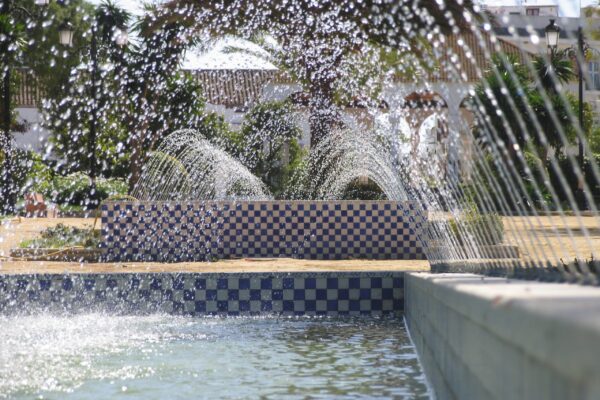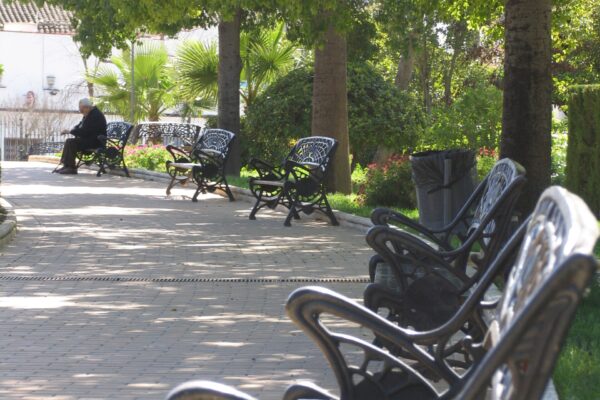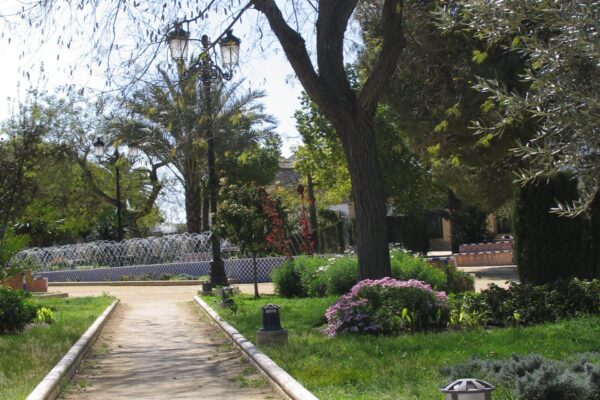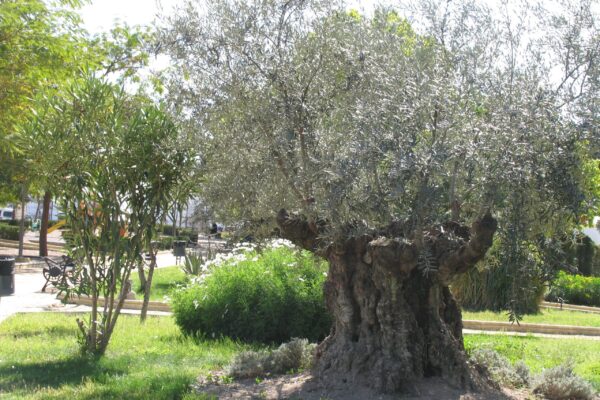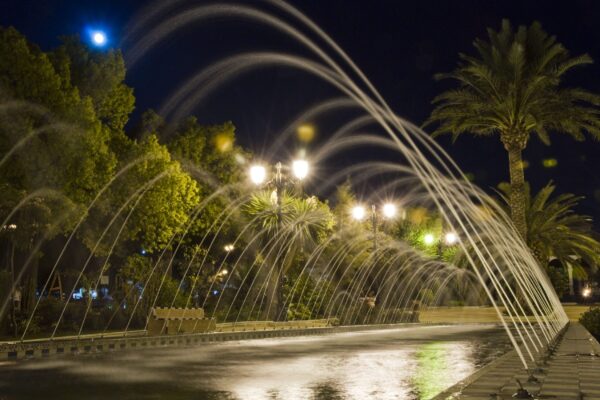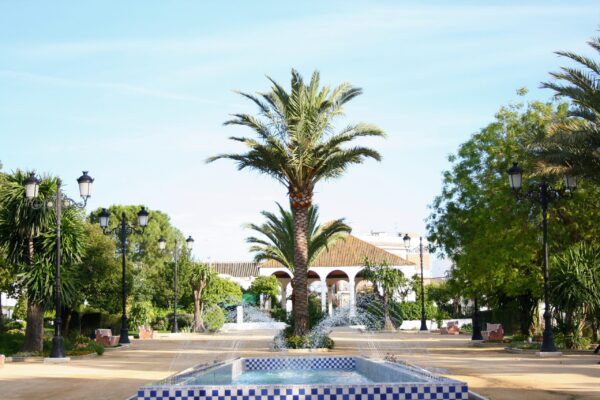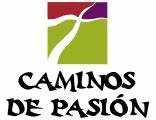


- Shepherd's Arch
- Cervantes Square
- John XXIII Square
- Encarnación Square
- Merced Square
- Assumption Square
- Santa Rita Square
- Duke's Square
- Marquess Square
- Main Square
- New Square
- Rodríguez Marín Square
- Consolation Square
- Salitre Square
- Pósito Pío de la Misericordia
- Martos Street Tower
- San Arcadio Park
Shepherd's Arch
Located on what was formerly known as the Puerta de Écija, between Plaza de Cervantes and Calle Alfonso XII. Its origins date back to 1796, as can be seen in the inscription at the top: ‘During the reign of Don Carlos IV and Doña María Luisa de Borbón. Year MDCCXCVI’.
With a marked neoclassical style, the symmetry and conciseness of its forms stand out. Among its elements, we can mention the large central semicircular arch that supports the construction, topped with an undecorated frieze. Above the frieze, we can see a majestic triangular pediment, a prominent feature of the ensemble. On this is a quadrilateral cartouche with inscriptions. Three pinnacles rise above the pediment, elegantly completing the construction.
It is the only building of its kind still standing in Osuna today, which has led it to become one of the city's most representative icons.
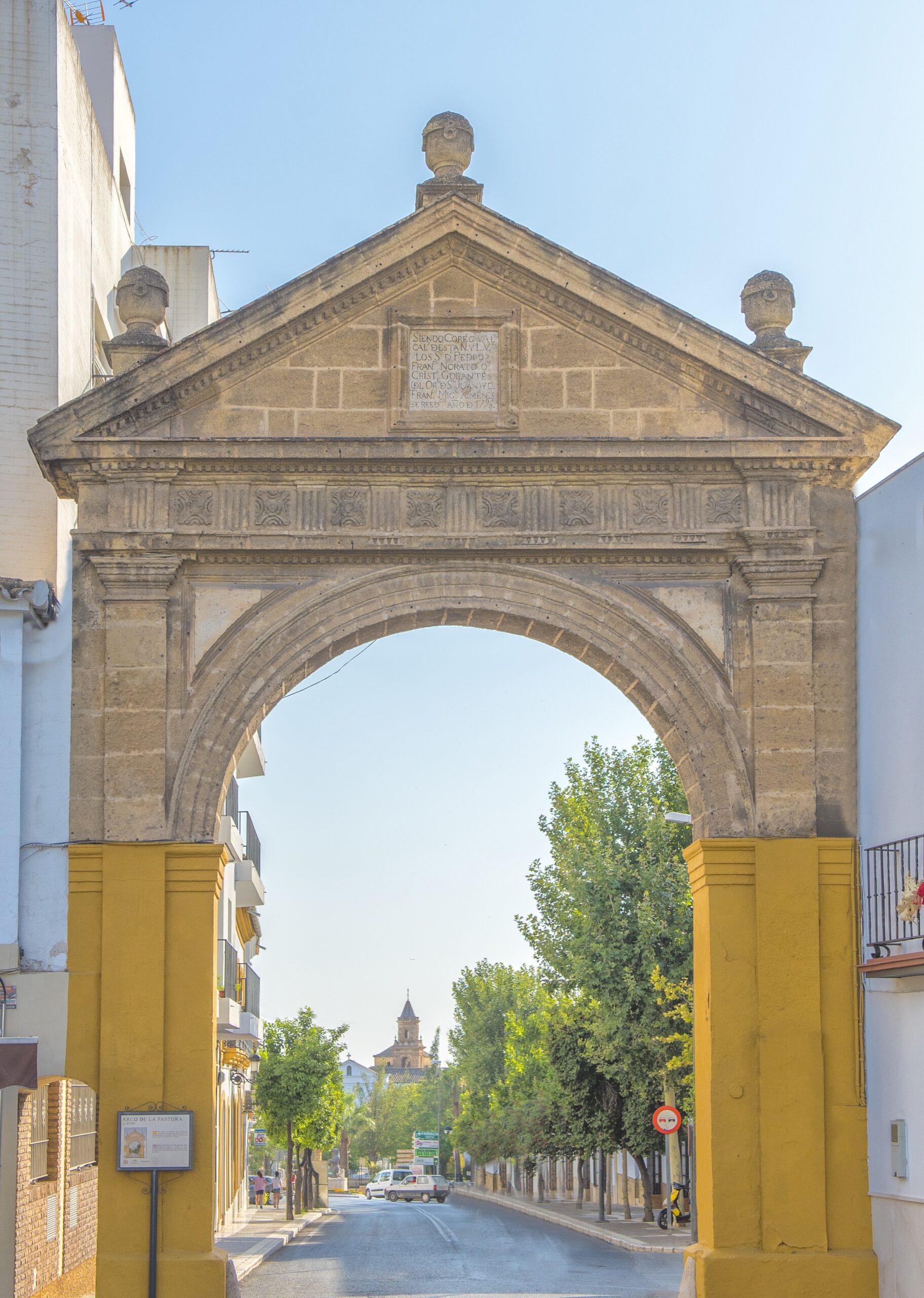
Cervantes Square
Its existence dates back to the second half of the 16th century. It was located in front of the Puerta de Écija gate. At the beginning of the 17th century, it was named Plaza de la Feria. Today, after repeated modifications, it bears the name of one of Spain's most distinguished writers. Next to it is the Arco de la Pastora arch.
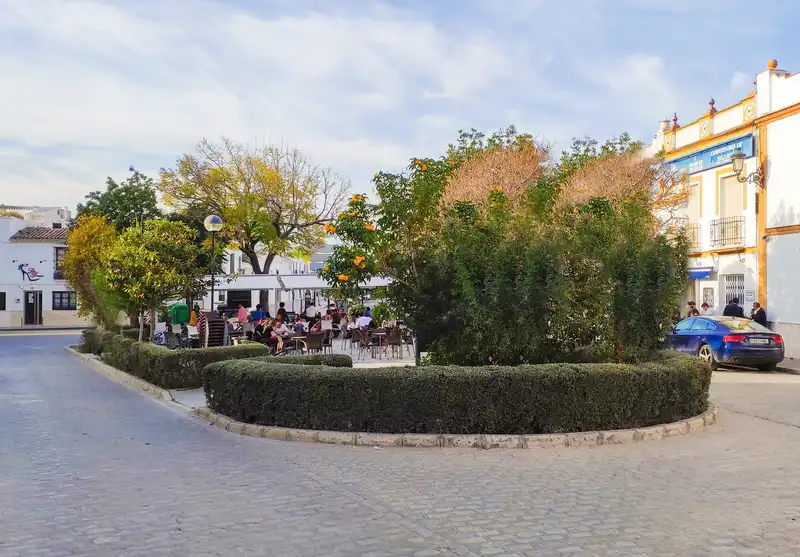
John XXIII Square
Nowadays known by this name, it was traditionally called Plaza de San Pedro, as it has been located next to the chapel of the same name since the first third of the 16th century. This religious space was converted into a convent for Carmelite nuns during the time of the 4th Count of Ureña.
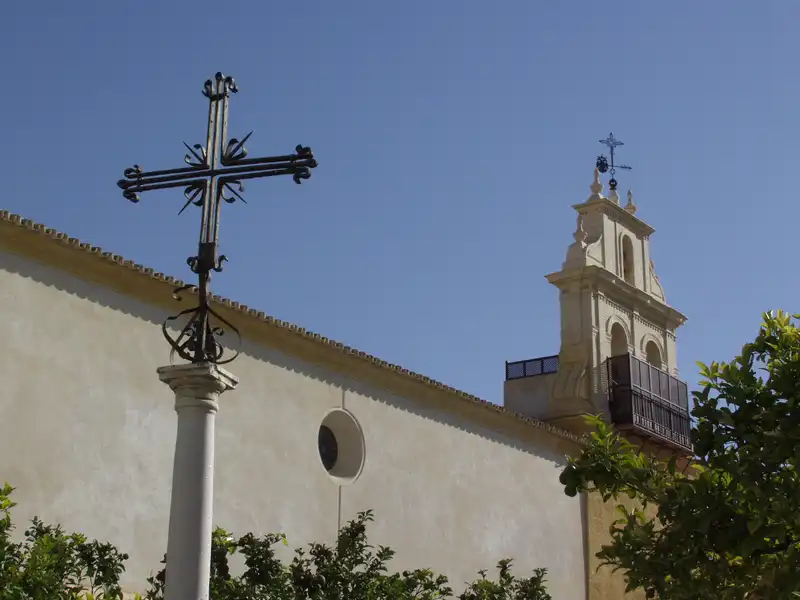
Encarnación Square
It is located at the foot of the Insigne Iglesia Colegial (Distinguished Collegiate Church) and in the vicinity of the Convento de Mercedarias Descalzas (Convent of the Discalced Mercedarians), founded under that name in the first third of the 17th century. The monastery was built on the site of the hospital founded by the 4th Count of Ureña.
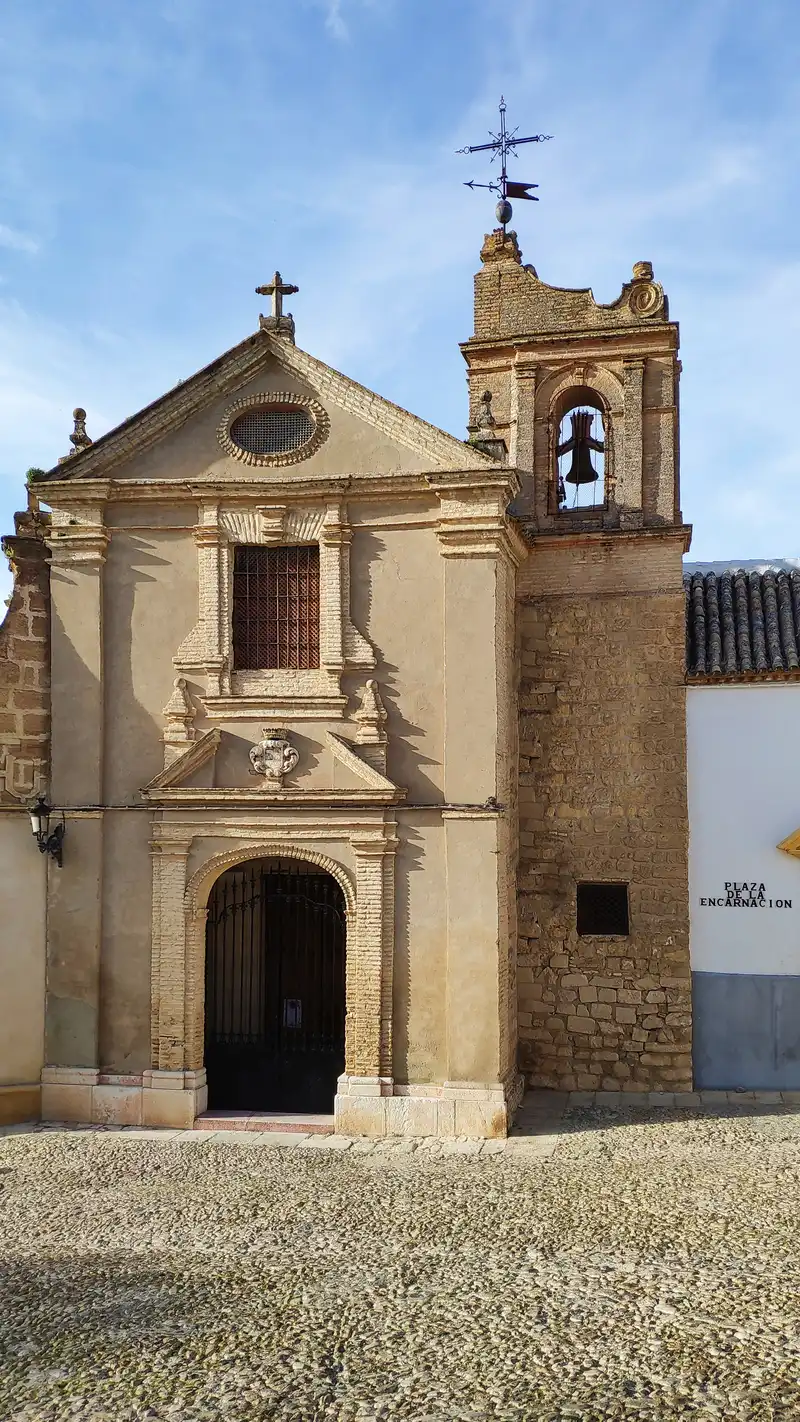
Merced Square
It was opened at the end of the Middle Ages, near the Puerta Nueva gate. In the 16th century, it was called Plaza del Doctor Serrano. The location of the Mercedarian convent in the mid-17th century changed this name, giving rise to the current one.
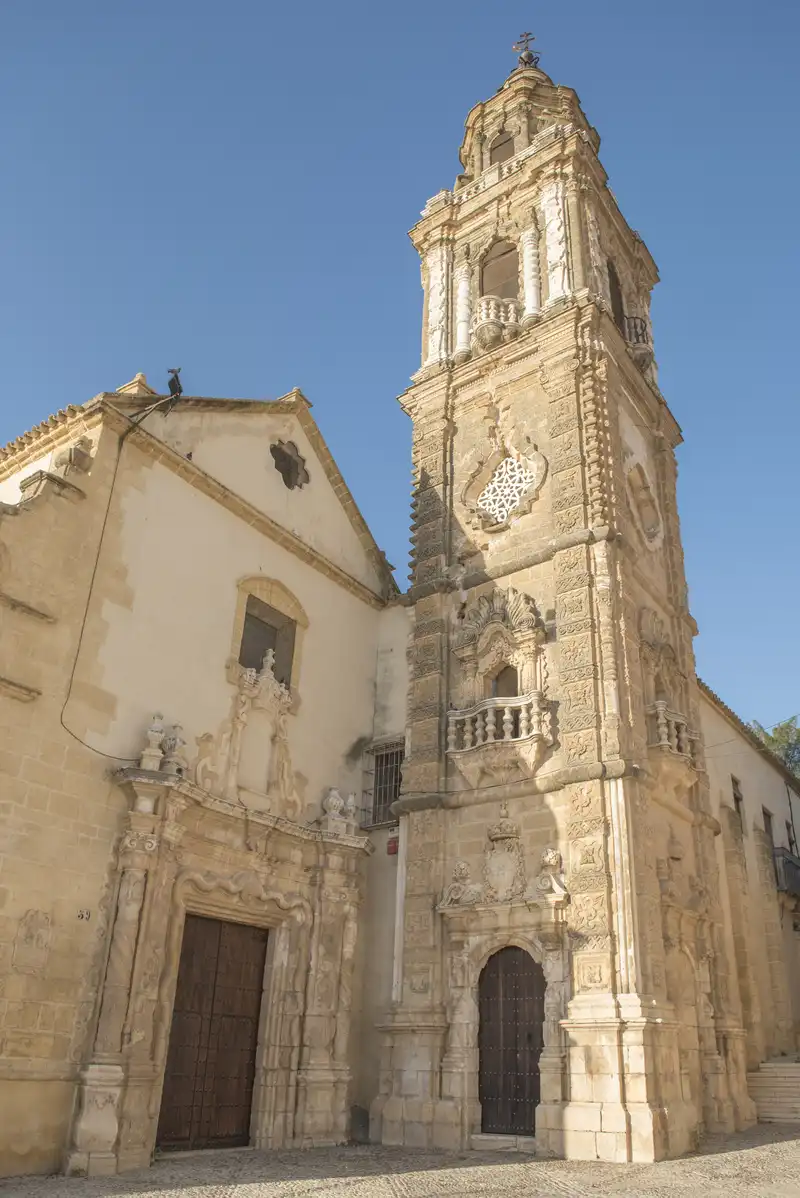
Assumption Square
Although it is no longer on the outskirts of the town, there is a neighbourhood that was initially remote and emotionally distant from the centre, a neighbourhood of small houses on the hillside of the Old University, in the shadow of the Insigne Iglesia Colegial (Distinguished Collegiate Church), which, with its modern architecture, knew how to interpret and integrate some of the formal and compositional principles of popular construction. This is the neighbourhood of La Rehoya. This neighbourhood is notable for its square, from which you can enjoy a beautiful and unique view of the Collegiate Church.
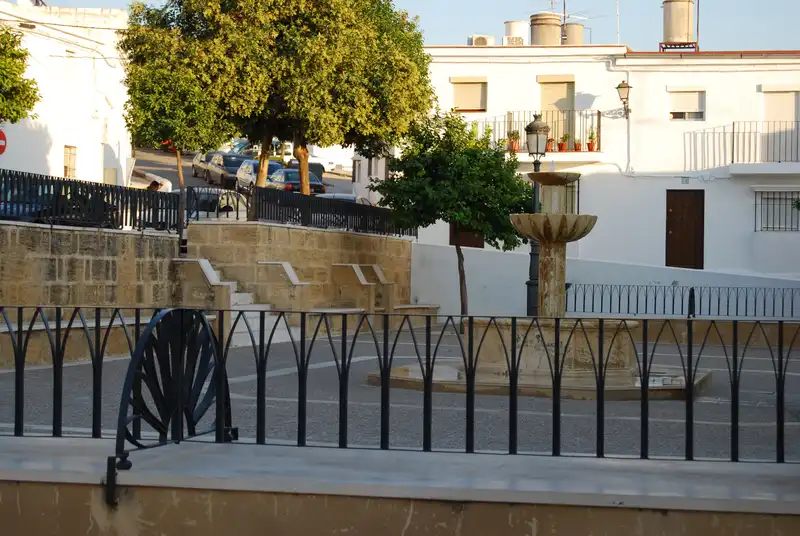
Santa Rita Square
This space, known in the second half of the 18th century as Plaza de los Plateros, was known since the end of the 16th century as Plaza de Miguel Pablos because a surgeon of that name owned several properties there. It was later renamed Plaza de San Agustín and currently appears in the street directory as Plaza de Santa Rita.
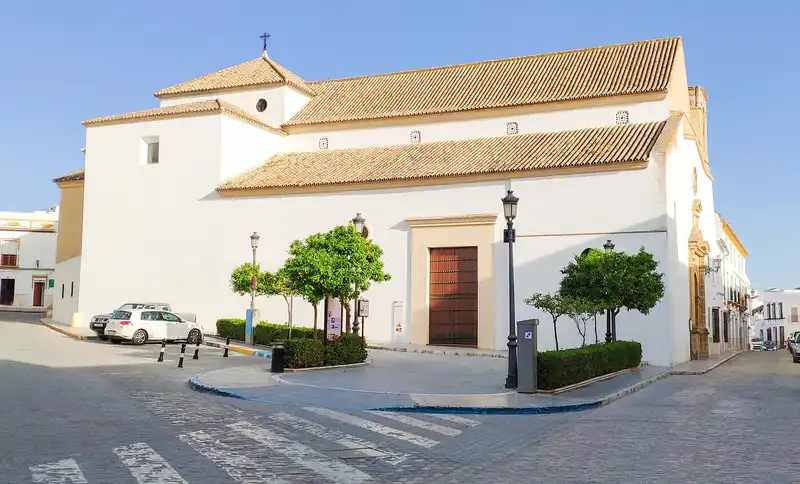
Duke's Square
It dates back to the last quarter of the 16th century. The Ursaonés council asked the 1st Duke of Osuna to cede a piece of his orchard to build a square where public celebrations could be held. This space was not definitively established until the ducal palace was built in the middle of the 17th century in one of its corners.

Marquess Square
Since the 17th century, it has been known as Placeta de los Caldereros, as it is located at the end of the street of the same name. It is a place conducive to the scenery and Baroque perspective provided by the monumental façade of the palace of the Marquis of La Gomera.
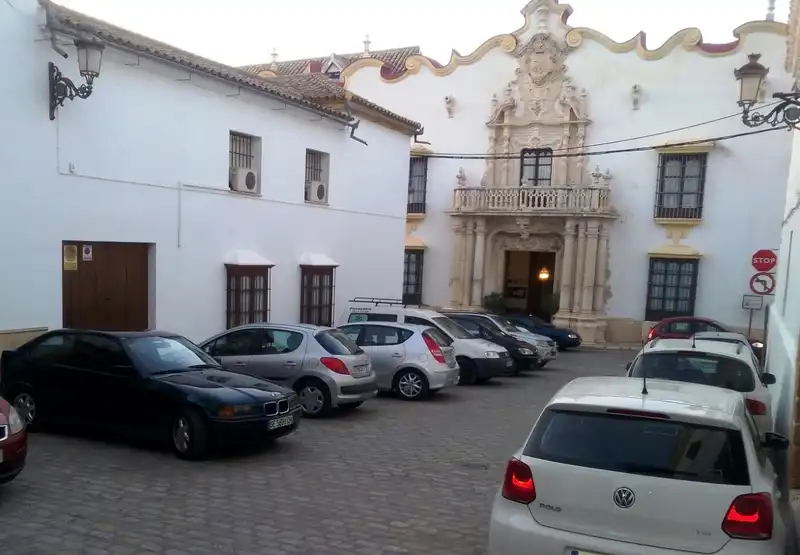
Main Square
It occupies the space where, since medieval times, the roads from Seville, Écija and Teba converged. It was originally a commercial area which, in the 16th century, became the city's main centre. Popularly known as the Alameda, it was renamed Plaza Mayor with the first democratic council.

New Square
Strictly speaking, it is not a square, but a street. Its name derives from the installation of a new square or fruit and vegetable market in that location, behind the butcher's shops, in 1839.
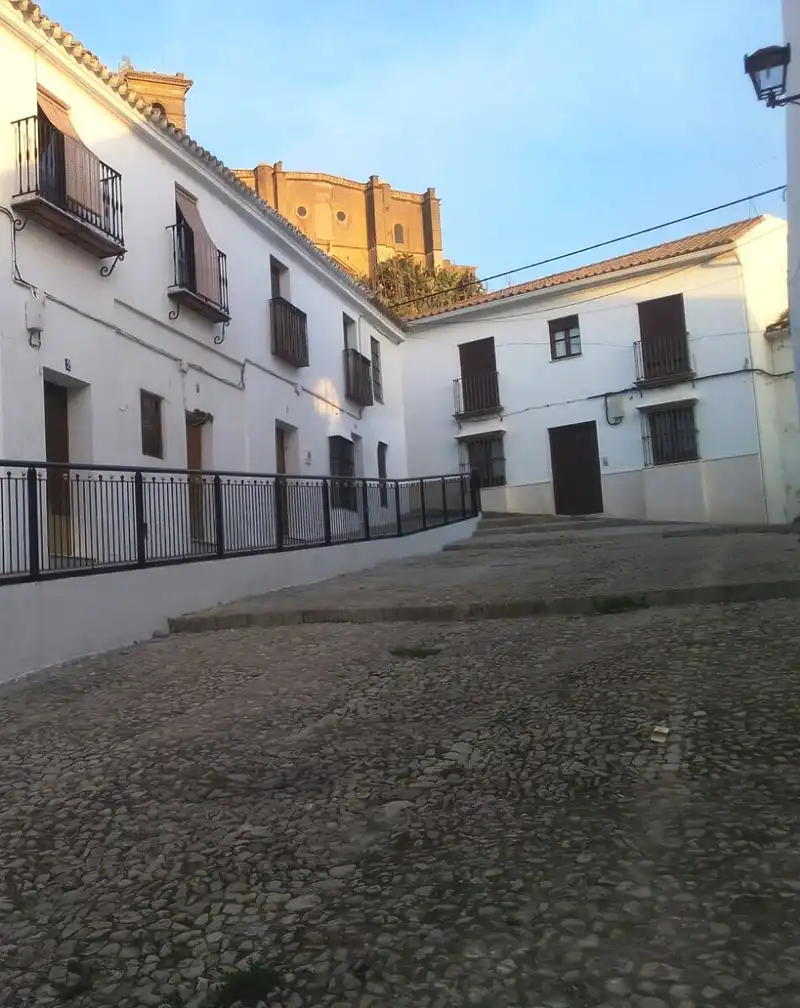
Rodríguez Marín Square
It first appeared in the 16th century as Plaza de San Sebastián. It was later renamed Plaza de Santo Domingo. Following changes to the nomenclature caused by the democratic transition, it was given the name Rodríguez Marín, and the bust of the Ursaonian polymath, which had previously presided over the Plaza Mayor, was moved there.
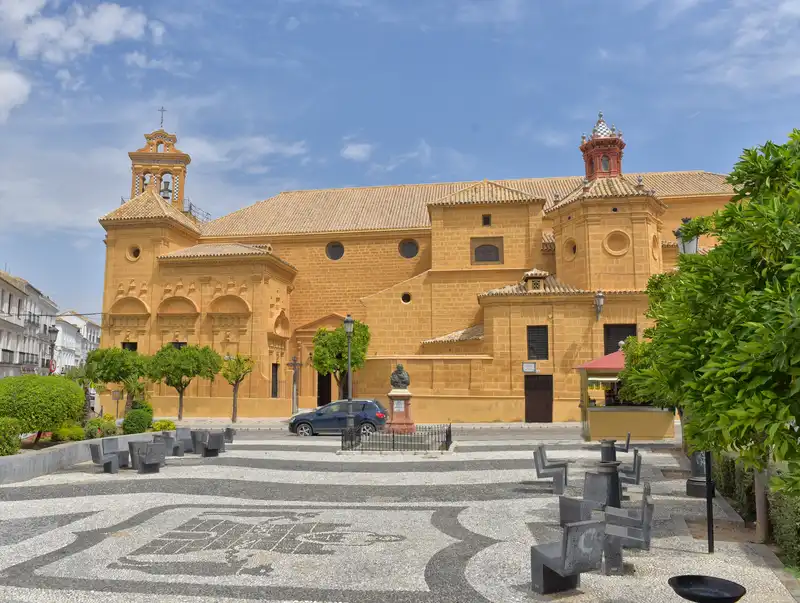
Consolation Square
It dates back to the mid-16th century. It received this name after the installation of the convent of the Third Order, founded under that dedication. Previously, it was called Plaza de la Noreta or Plaza del Polvero, as it was a place where lime was manufactured. It formed an undifferentiated space with the current Plaza Arcipreste Govantes.
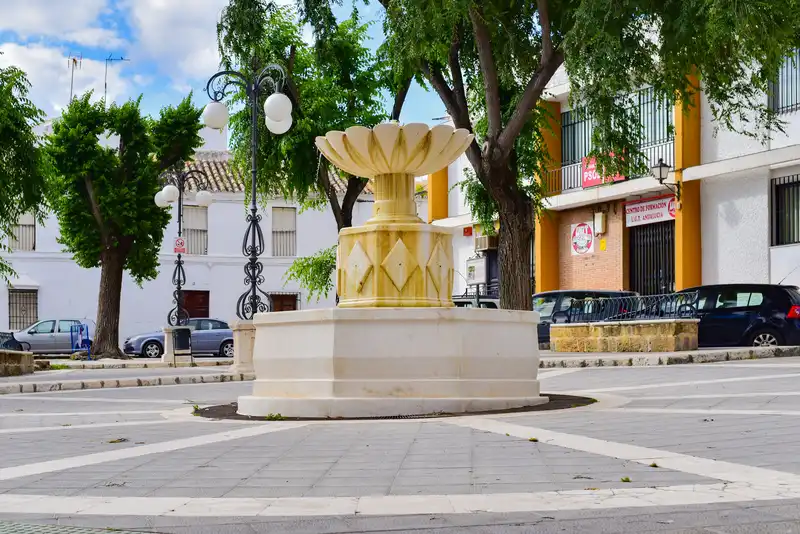
Salitre Square
This name appears in 16th-century texts, referring to the trade that took place in that area. During Franco's dictatorship, it was renamed Plaza de Canalejas, but it regained its old name when the street names were changed after the transition to democracy.
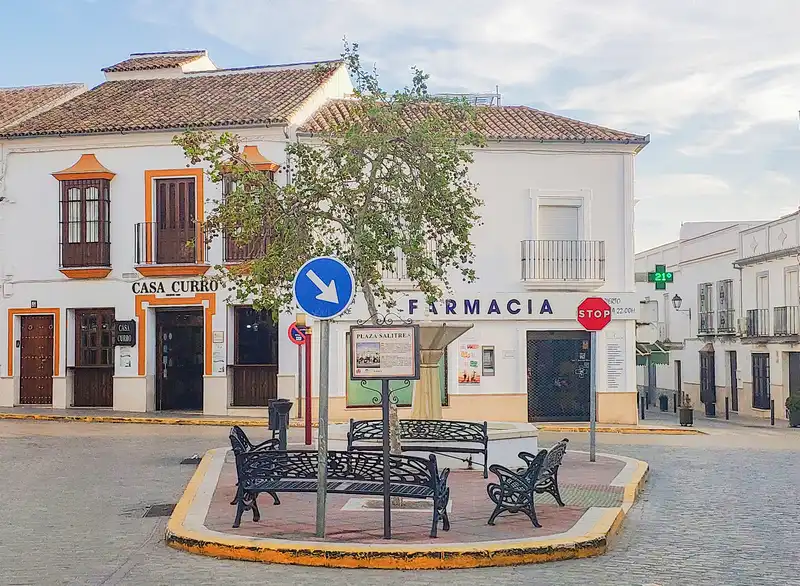
Pío de la Misericordia Granary
Located at 41 Navalagrulla Street.
It was founded by Alonso Navarro de Figueroa in his will in 1680 with the charitable intention of lending wheat for sowing to the poorest farmers. The Pósito Pío de la Misericordia, or Pósito de la Caridad, is a place used as a dwelling. Its façade is notable for the fact that the two openings, which are not the doorway, are the most ornate. The doorway features a niche, inside which there is a pious clay figure, possibly the Virgin Mary, holding two children in her lap, perhaps Jesus and John, embodying the Christian idea of charity, as there appears to have been another figure, now broken, at the feet of the Virgin, reaching out to them with imploring arms.

Martos Street Tower
Although it forms part of a building intended for housing, as can be deduced from the continuity of some of the ashlars, it can currently be interpreted as an independent building. On top of a sturdy first section, which opens onto the street with a doorway and a window in a formal Plateresque style, there is a narrowing bay window with solid corners. In front of it is an unusual Osuna-style arcade with two openings in which the lowered arches rise vertically from the capitals, acting as mullions.
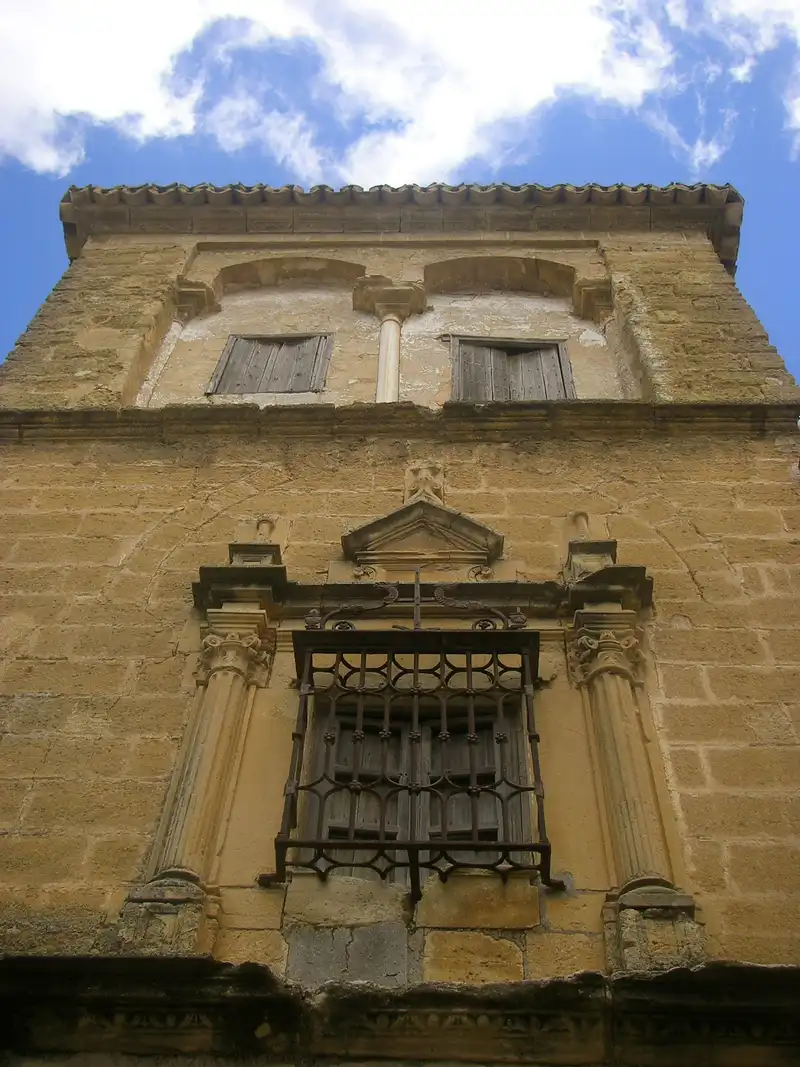
San Arcadio Park
San Arcadio Park is located to the north of the town, at the junction of Alfonso XII Street and the Lantejuela road. It is the oldest park in the municipality and is estimated to have been built around 1927, with the aim of providing the town with a recreational area. It covers an area of approximately 13,345 m2. It is a linear park with a geometric layout, with a popular bandstand at one end that acts as a focal point. The garden areas are divided into different zones that modulate the rhythm of the axis with a series of transverse entrances. Of particular note is the perimeter fencing of the enclosure, with a gate inspired by the María Luisa Park in Seville, and the entrance gate, which is a gate belonging to the old church of San Francisco, dating from 1886.
The central fountains and benches are decorated with ceramics inspired by the 17th century. These ceramics were made by students at the Manuel Rodríguez Buzón workshop school.
The garden is divided into 16 areas, the first of which is located at the entrance, where visitors can enjoy the floral explosion of Cersis Siliquastrum in spring, the wonderful scent of Laurus Nobilis, the beauty of Viburnum Tinus in bloom, and three beautiful specimens of Bella Sombra, Phytalacca Dioica.
Next to it are two areas designed for children, one surrounded by Tipuana Tipu trees and the other by Catalpa bignonioides and Jacaranda mimosifolia trees. When all three are in bloom, they create a play of white, blue and yellow colours, while also protecting children from the sun's rays in summer and, as they are deciduous, allowing them to make the most of the sun in winter. Next is the Paseo de la Ribera, which aims to highlight the native flora of the Mediterranean gallery forest, covering this space with different varieties of poplars, some specimens of Tamrix and Salix Alba.
Continuing along this path, we come across specimens of Prunus cerasifera, Hibiscus azederach, Punica granatum, Hibiscus rosa-sinensis, Justicia adhatoda and Jasminum officinale. There is also a magnificent specimen of Araucaria excelsa. Here we find the irrigation hut where the irrigation system controls are located, which is perfectly integrated into the environment. It is a building with a hipped roof and tiled details.
Opposite these areas described above, there is also a group of flowerbeds that belong to the original structure of the park, where the original trees have been preserved and combined with a wide selection of shrubs such as Lantana camara, Photinia serrulata, and Philadelphus coronarius. Here we can see four magnificent specimens of white-leaved olive trees, each approximately three hundred years old. There are also different species native to the Sierra Sur Sevillana, such as several varieties of Quercus, Crataegus siliqua, Pistacea Lentiscum Chamaerops Humilis, and Arbutus Unedo.
At the end of the grounds, we find a large area called Glorieta de las Palmeras, where we must highlight the large specimens of Washingtonia robusta, which were transplanted during the park's restoration work, as they were located at the entrance where the fairground booths used to be. When this space was incorporated into the park, they were in the way, so they were transplanted to the lower area, where they joined several specimens of Washintonia Filifera that already existed in this flowerbed, along with new species such as Cycas Revolutas, Arenga Pinnata, Tradchycarpus Fortunei and Phoenis Canariensis. We should highlight the presence of two Pinus Halepensis in this flowerbed, which, although not corresponding to the species planted there, have been in this park since its construction. Next to this is the Cactus Terrace, with different varieties of Agaves and Aloe Vera. We also find Echinopsis vollianus, Euphorbia Resinifera Cactus and the Opuntia pinus-indica or prickly pear, which is highly valued by the municipality.
At one end of the park, right next to the main entrance, there is a large pavilion with a circular apse that faces away from the town. This building, which is raised above the level of the promenade, is a privileged spot for contemplation. It was completed in 1927 by master builder Diego Jiménez. Its configuration as a large pavilion or possible bandstand is the centrepiece of the park, being the most significant built element.

